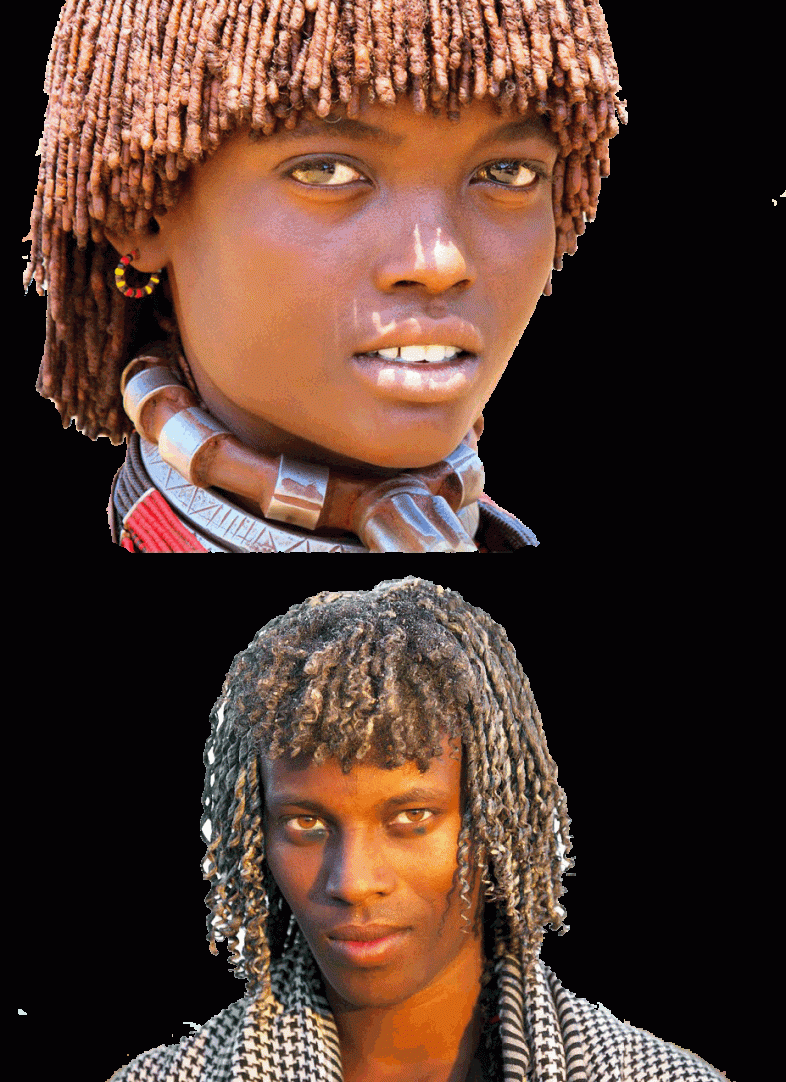Etymology Workshop: ِLook at the two faces: They are probably the closest you can get to our ancient ancestors who crossed the Red Sea some 50,000 years ago and gave us life – all seven billion. Some were a bit lighter in colour, the colour of sand. It is said it takes just seven generations to change into the huge variety of human beings in colour and some features.
It is astonishing what boys would do to to have their first kiss. Equally astonishing what girls would do to get the boys to beg for their first kiss. The first poem is likely to have been written for a girl. The first perfume girls discovered may have inspired the first poet. It always worked both ways, and most of the love stories of ancient times ended triumphantly otherwise we wouldn’t count over seven billion people today.
We are told that “poetry as an art form may predate literacy. The earliest poetry is believed to have been recited or sung, employed as a way of remembering oral history, genealogy, and law. Poetry is often closely related to musical traditions, and the earliest poetry exists in the form of hymns (such as the work of Sumerian priestess Enheduanna). Many of the poems surviving from the ancient world are recorded prayers, or stories about religious subject matter, but they also include historical accounts, instructions for everyday activities, love songs, and fiction (Wikipedia).
This is an opinion to consider but the fact “feeling” and “poetry” are from the same root is telling us love, was the great inspiration for poetry, not history, genealogy, and law because none of these were essential to communicate in ancient times. Need was the prime motivation of most things considered important for our ancestors.
The two images on this post are probably the closest you can get for a glimpse of how our ancestors looked like. These are from the famous Hamer tribe of the river Omo in Ethiopia. The name is very significant. The linguistic cluster *ʼM/*Mʼ is a category for all things motherly and water at the same time. The connection between the two very ancient roots is that mums were the providers of milk. It is liquid, like water, so this was its name *Mʼ. The reversed root is *ʼM “mother”.
Like in ancient times, boys and girls of the Hamer tribe use butter for the hair. Our ancestors used several natural oils for the hair to keep it smooth and prevent insects from getting into it. *ʼR, as indicated in other posts, is the boy-girl category from the private parts to living together and have babies.
In Akkadian, the oldest attested language in the world, ‘nârūtu’ is “music, the profession of a musician, musicianship, poetry (?) / the profession or art of a poet (?). The word appears to be an extension of the root *ʼR (n+*ʼR). So, poems may have been written to express different feelings but the root is about boy-girl so it can be assumed it was about love.
#Origin_of_feeling ; #Origin_of_poetry
This post presents crucial ancient concepts related to a previous post so our advice is to read the original post and the one connected to it:
https://plus.google.com/100191404216524196296/posts/bJMGwQnudXb
The Etymology team claimed that the development of the linguistic cluster *ʻš/*šʻ was probably instrumental in separating humans from other animals forever by advancing concepts we share with other animals and concepts we don’t like “ugliness”, “inseparable love” and awareness of large numbers. Of course ‘ten’ is not a large number for us today but there is a reason why ancients communicated duals. Two people in a total population outside Africa of no than 600 hundred modern human beings is an important number. Five ‘khamsa’ remains a description of a huge army.
We also said that the ancients grouped things in categories, or linguistic containers. Anything that looked like something easily recognisable can be grouped with the same word. From the cluster *ʻš/*šʻ they developed *ʻšb “grass”. From the same cluster šʻr is “hair” because it is made of elements similar to grass with noticeable density.
The same word (šʻr) means “to feel”. In Today’s Arabic it is pronounced slightly differently ‘šaʻr’ but this is a relatively recent vowelised introduction. But what has “hair” to do with “feeling”?
In extant literature hair described as simple in structure, but has important functions in social functioning. Hair is made of a tough protein called keratin. A hair follicle anchors each hair into the skin. The hair bulb forms the base of the hair follicle. In the hair bulb, living cells divide and grow to build the hair shaft. Blood vessels nourish the cells in the hair bulb, and deliver hormones that modify hair growth and structure at different times of life.
At the base of the hair follicle are sensory nerve fibres that wrap around each hair bulb. Bending the hair stimulates the nerve endings allowing a person to feel that the hair has been moved. One of the main functions of hair is to act as a sensitive touch receptor. Sebaceous glands are also associated with each hair follicle that produce an oily secretion to help condition the hair and surrounding skin.
More on hair here:
http://www.nlm.nih.gov/medlineplus/ency/imagepages/9703.htm
So it appears that “feeling” is a natural concept. The air moves the hair so we feel the wind, and the same when an insect crawls on our hand or foot. However, certain “feelings” can move the hair. Here’s the view of a specialist:
Imagine swimming in a lake on a hot summer day. The water is quite warm, but the wind is strong and the moment you leave the water you feel chilly and get “goosebumps.” So you change clothes and move inside to warm up. You make a nice cup of tea, get under a blanket and switch on the radio. Suddenly, you hear a song from a long time ago, the song your grandmother used to sing to you when you were a child. Again, you feel a chill on your back and again, you get goosebumps. Why do such seemingly unrelated events elicit the same body reaction? The reason for this is the physiology of emotions.
More here:
http://www.scientificamerican.com/article/why-do-humans-get-goosebu/
The same word (šʻr) that means “to feel” also means “poetry” and ‘poet’ (šaʻr). She or he may invoke in us a feeling that make goosebumps erupt suddenly.
The test for poetry, then, is simple. If it doesn’t make you shiver lightly it is rubbish. If the words are not from the heart then it is not poetry.
Animals do shed tears but human beings are the only animals that shed emotional tears. We know we cry when we’re miserable but do we cry when we’re happy?
Here is the thing:
My teeny-tiny almond-sized hypothalamus can’t tell the difference between me being happy or sad or overwhelmed or stressed. Yours can’t tell the difference, either. All it knows is that it’s getting a strong neural signal from the amygdala, which registers our emotional reactions, and that it must, in turn, activate the autonomic nervous system.
More here:
https://www.psychologytoday.com/blog/brain-babble/201308/why-do-we-cry-when-were-happy
http://s8927.blogspot.com/search/label/Romantic%20Lovely%20urdu%20poetry
Last modified: December 30, 2022



